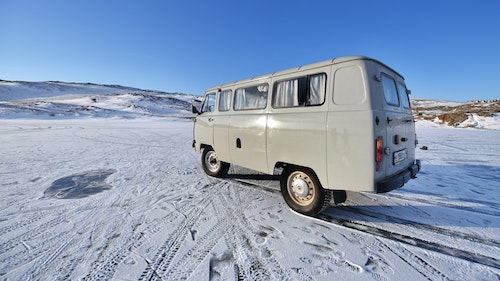If you use your RV or van in winter, spring, summer, and fall, you need an efficient way to keep it warm when temperatures drop. If you run into unseasonably cold weather, your propane RV heat isn’t always best unless you always travel with propane tanks so you are ready for anything.
Many RVs use forced air heat warmed by a propane-fed flame to heat the living space through vents. Although it works well, you have to depend on propane and also ensure you have detectors in case of leaks or poor ventilation. If you want to avoid the hassles of propane heat, you can consider one of the following options:
Warm Waves In-Floor Heating System
Warm Waves In-Floor Heating is a radiant heating system that produces heat throughout the floor. It doesn’t take up space like other heating options and keep the heat consistent using infrared technology. FAR infrared produces radiant heat that is highly efficient and very safe compared to propane. It uses infrared energy with infrared light that warms the floor creating indirect heat. The heat travels through the floor so even if someone enters the RV or opens a window, the warmth remains concentrated and effective.
The heat is contained within the space where it is stored and produced continuously. As a result, the efficiency to produce the heat is about 70%. This means the majority of energy needed to produce the heat is usable. Propane experiences higher losses through doors and windows, and even during the process of delivering the warm air to your space through vents.
Wood Stove
RV wood stoves are the same as the stoves used in other small spaces such as trailers, tiny homes, and vans. It is small and self-contained with many styles to choose from. Although you do need a chimney pipe for the combustion gas. They are reasonably cheap to run but will need an ongoing supply of wood.
They are also very warm, perhaps even too warm, so you’ll need enough space to keep your space comfortable with such intense heat. You’ll also need proper insulation in the floors, walls, and ceilings. As well as, an exhaust to prevent carbon dioxide from building up inside your RV in hand with a separate air intake pipe is also required.
Portable Radiant Heater
Portable radiant heaters use electromagnetic energy to provide warmth. You can choose the size to suit the square footage of your van or RV but will require clearance to reduce the risk of fire. You can choose a free-standing model you take along on trips, so you can also use it at home or at the cottage.
Heat Pump
Electricity is used to heat the inside of the camper, van, or RV rather than propane. As the name implies, it moves heat from one place to another with the help of a pump. It takes heat from outside the RV and moves it inside through the ventilation system.
A heat pump is a great way to keep an RV warm, and it’s especially popular on bigger RVs because it’s so easy to use. People who go RVing sometimes use electric space heaters to keep warm, but it’s good to have other options. This is especially true because they can work together to keep people warm and save money.
If you would like more information about Warm Waves In Floor Heating Systems, click here to get a quote today.


Recent Comments